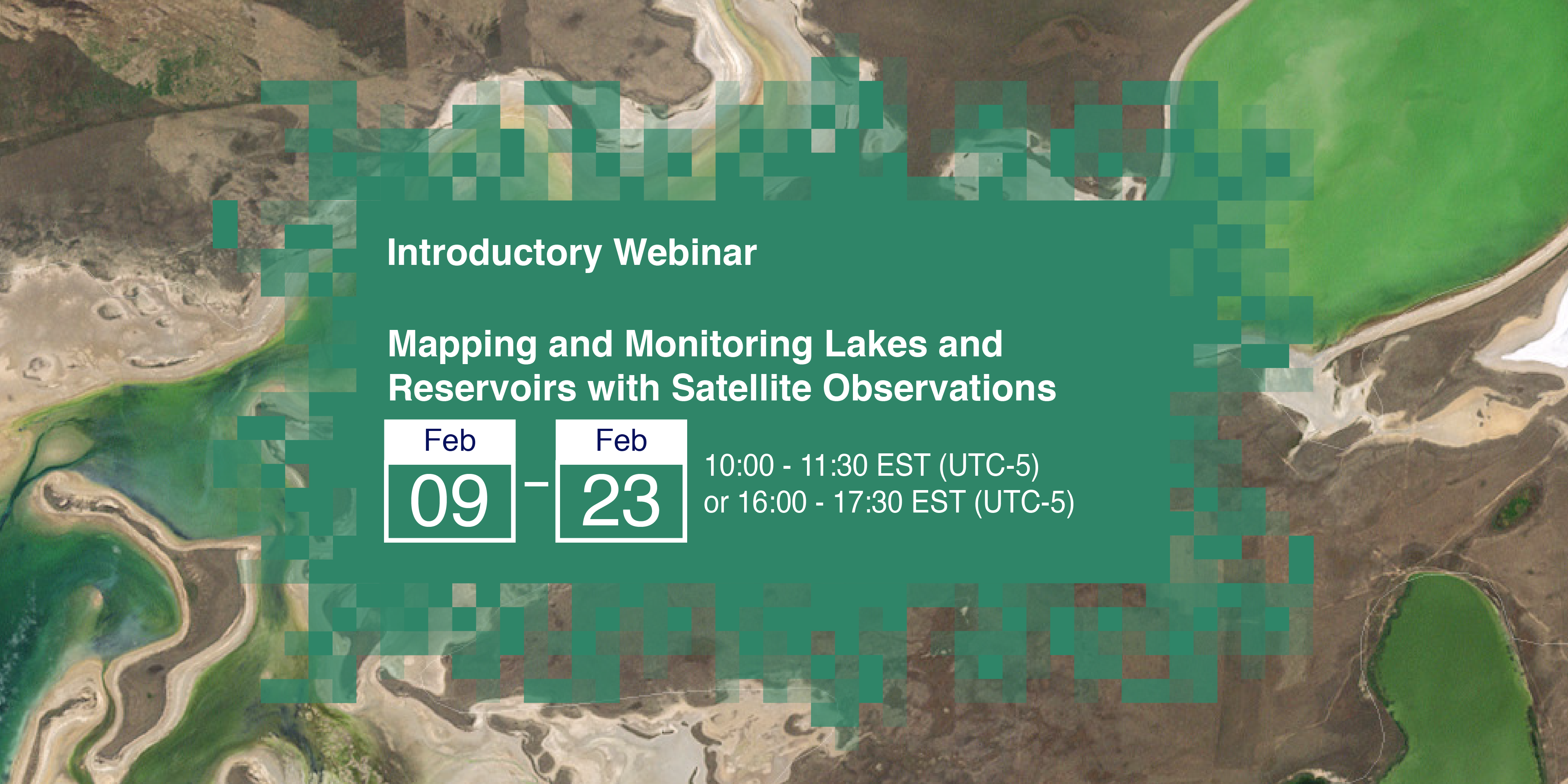Natural lakes and man-made reservoirs are a part of Earth’s surface water. Freshwater lakes and reservoirs are used for drinking water, fishing, and recreational activities. Aside from the aesthetic and scenic value added by their presence, lakes support surrounding plant and aquatic ecosystems and wildlife. A variety of factors affect lakes and reservoirs, including climate variability and change, land use, and other watershed activities influencing surface runoff and groundwater. Therefore, monitoring the water quantity and quality of lakes and reservoirs is crucial for their sustainable management. This training focuses on introducing remote sensing observations for monitoring the water level of lakes; a critical surface water component affecting the residential, economical, and recreational sectors in the area. Recent observations of lake bathymetry based on remote sensing observations will also be presented.
Course Dates: February 9, 16, 23, 2021
Times and Registration Information:
Times: 10:00-11:30 & 16:00-17:30 EST (UTC-5); There will be identical sessions at two different times of the day. Participants need only to register and attend one daily session.
Register Here
Learning Objectives: By the end of this training attendees will learn to:
- Identify the remote sensing data and methodology required to obtain water level and bathymetry of lakes
- Access water height and bathymetry data for monitoring lake levels
- Illustrate the use of lake level and bathymetry data for lake and reservoir management
Relevant UN Sustainable Development Goals:
- Target 6.4: By 2030, substantially increase water-use efficiency across all sectors and ensure sustainable withdrawals and supply of freshwater to address water scarcity and substantially reduce the number of people suffering from water scarcity
- Target 6.6: By 2020, protect and restore water-related ecosystems, including mountains, forests, wetlands, rivers, aquifers and lakes
Audience: Federal, state, regional, and local public and private organizations involved in water resources and ecosystem management, dam and hydropower operations, and waterfront recreation and development planning
Course Format: Three, one and a half hour parts

